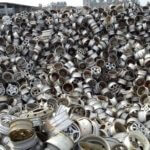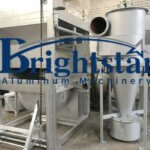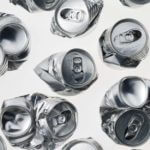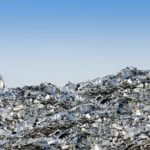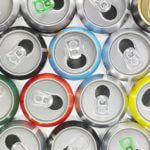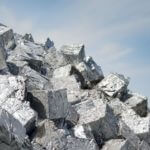Seven things your competitors know about aluminum scrap pretreatment process
Seven things your competitors know about aluminum scrap pretreatment process
1. Global secondary aluminum production:
Aluminum can be recycled indefinitely, and recycled aluminum can save more than 90% of energy and reduce emissions by more than 90% than primary aluminum.
Since aluminum production began in 1888, more than 1 billion tons have been produced; 75% of which are still in recycling.
In 2017, the global production of the metal aluminum from scrap (recycled) was 30.986 million tons, accounting for 32.7%, and alumina production (primary) was 63.826 million tons, accounting for 67.3%.
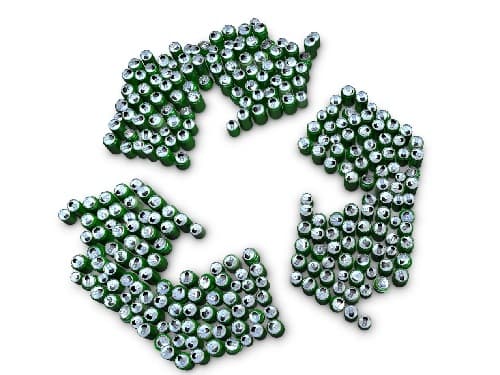
2. Current status of scrap aluminum resources
At present, the aluminum scrap used by domestic secondary aluminum plants mainly comes from two sources.
One is aluminum scrap imported from abroad, and the other is domestic aluminum scrap.
Although they are all aluminum scrap, the quality is obviously different.
2.1 Imported scrap aluminum
Generally, it can be divided into the following categories:
2.1.1 single type of aluminum scrap
This type of aluminum scrap is generally a certain type of waste parts, such as internal combustion engine pistons, automobile reducer casings, automobile wheels, automobile front and rear bumpers, aluminum doors and windows, etc.
These scrap aluminum have been clearly classified when imported, the variety is single, and they are all imported in batches, so they are high-quality recycled aluminum raw materials.
2.1.2 Zorba
Many developed countries use mechanical crushing methods to break them when processing waste cars, waste equipment and various types of waste household appliances.
It is divided into scraps and then mechanized sorting. The sorted aluminum scrap is the Zorba.
In addition, the recycling department also uses crushing methods to break into the scraps when processing some large scrap aluminum parts, such scrap is also called Zorba.
The Zorba is convenient to transport, easy to sort, and it is a relatively clean material. They are high-quality aluminum scrap.
At present, for the scrap aluminum trade in the international market, Zorba occupies a large amount, and various Zorba is developing in the direction of standardization.
As far as the composition of the Zorba is concerned, they are generally divided into several grades, among which the high-grade Zorba is a relatively pure mixture of various scrap aluminum and its alloys.
Most of them can be smelted without any treatment, and a small amount is of low grade.
The Zorba contain different amounts of impurities, and generally contain more than 80-90% of scrap aluminum.
The impurities are mainly non-ferrous metals such as scrap iron and steel and scrap copper, as well as a small amount of waste rubber. After manual selection, pure scrap aluminum is got.
Zorba is relatively easy to smelt, convenient to enter the furnace during smelting, easy to remove impurities, less solvent consumption, higher metal recovery rate, and low processing cost.
They are very popular in secondary aluminum factories. Generally, large secondary aluminum plants use Zorba as the main raw material.
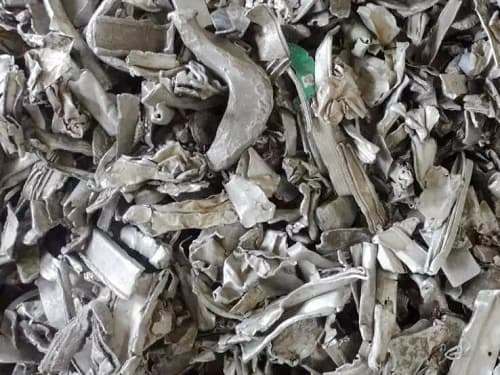
2.1.3 Mixed aluminum scrap
Such scrap aluminum has a complex composition and different physical shapes.
In addition to scrap aluminum, it also contains a certain amount of scrap iron and steel, rubber, copper, lead, zinc, etc. Metal and wood, plastics, stones, etc., part of aluminum scrap and steel scrap are mechanically combined.
This type of waste has a complex composition and is difficult to sort. However, a small amount of scrap aluminum is large in size and has a clear surface, which is convenient for sorting.
This type of scrap must be pre-treated before being smelted, that is, scrap steel and other impurities are manually picked out.
2.1.4 Shredded aluminum scrap after incineration
This is a low-grade aluminum-containing scrap, mainly crushed from various scrapped household appliances.
After sorting out a part of scrap steel, it is a material formed by incineration. The purpose of incineration is to remove combustible materials such as waste rubber and waste plastics.
This kind of aluminum-containing scrap generally contains about 40-60% aluminum, and the rest is mainly garbage (bricks and stones), scrap steel and a small amount of copper (copper wire) and other non-ferrous metals, with a lumpiness generally below 10 cm.
During the incineration of this kind of aluminum scrap, some aluminum and materials with low melting points such as zinc, lead, tin, etc. are melted, forming a glass-like surface with other materials, which is difficult to identify with the eye.
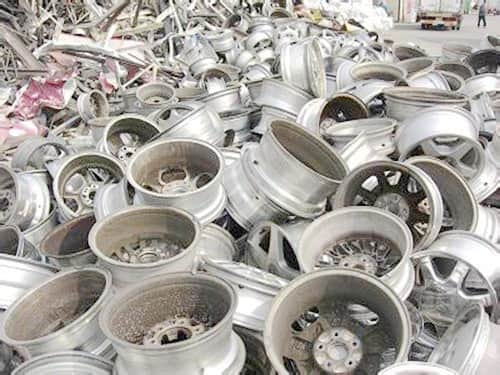
2.1.5 Mixed shredded aluminum scrap
This type of scrap is the lowest grade aluminum scrap, much like garbage, its composition is extremely complex, which contains about 40-50% of various aluminum and aluminum alloy scrap, and a certain amount of scrap steel and a small amount of lead and copper (less than 1%), and most of the rest are garbage, stones and soil, waste plastics, waste paper, etc. Soil accounts for about 25%, scrap steel accounts for 10-20%, and stones 3-5%.
2.2 Domestic recycled aluminum scrap
Most of the recycled aluminum scrap in China is pure and contains less impurities. It can be basically divided into three categories, namely, wrought scrap aluminum, cast scrap aluminum, and scrap alloy aluminum commonly referred to by the recycling department.
Wrought Scrap aluminum generally refers to pure aluminum, which should contain more than 99% aluminum, such as waste cables, waste household tableware, kettles, etc.
Cast scrap aluminum is mainly casting aluminum alloy, mainly scrap machine parts, such as scrap vehicle parts, waste molds, waste cast aluminum pots, internal combustion engine pistons, etc.
Scrap alloy aluminum, such as scrap aircraft aluminum, aluminum doors and windows, etc.
As far as the production sector of aluminum scrap is concerned, it can be divided into domestic aluminum scrap and industrial aluminum scrap.
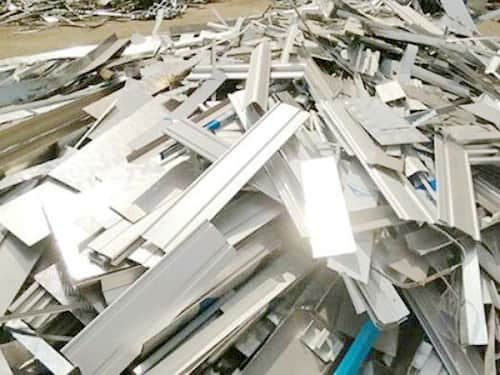
2.2.1 Scrap aluminum generated in the field of life
Such as waste household tableware, kettles, waste cast aluminum pots and basins, waste aluminum parts in waste household appliances, waste wires, waste packaging, etc.
2.2.2 Scrap machine parts of aluminum and its alloys in scrap electromechanical equipment
such as scrap auto parts, scrap airplane aluminum, scrap molds, scrap internal combustion engine pistons, scrap cables, scrap aluminum tubes, etc.
2.2.3 Aluminum scrap produced by manufacturing factories
This kind of aluminum scrap is generally called new scrap, which mainly includes aluminum and its alloys produced in the production process, leftovers and scrap and chips materials produced in the aluminum processing process and mechanical processing systems, scrap aluminum cables from cable factories, waste castings from the foundry industry, etc. Except for the oily scraps, the new waste is all high-grade aluminum scrap. If it can be clearly classified and stored when the scrap is generated, the use value is extremely high.
2.2.4 dross and slag produced in the aluminum melting process
This kind of scrap is often referred to as aluminum dross. Wherever there is molten aluminum, aluminum dross will be generated.
The more complex the composition of scrap aluminum, the more impurities, and the more serious the surface pollution, the greater the amount of aluminum dross will be produced.
The aluminum content in aluminum dross is related to the selected agent and smelting technology.
Generally, the aluminum content is below 10%, and the high content can reach more than 70% (referring to metallic aluminum).
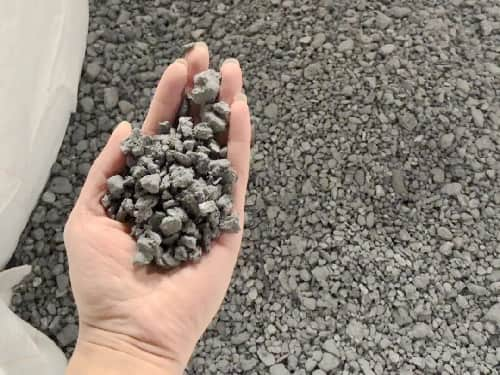
3. The purpose of pretreatment of aluminum scrap
The raw materials of secondary aluminum production factories are mostly aluminum and aluminum alloy scrap recovered through recycling.
These scraps come from complex sources and come in different shapes, often entrained with some other metals and non-metals, with a wide range of composition changes and unclean surfaces.
If these materials are not removed before smelting, it will not only cause serious air taking of aluminum melting, produce defects such as gas porosity, blowhole during the subsequent solidification process, but also make the composition and performance of the material unqualified.
In addition, a large number of harmful gases will be generated during production, which will seriously pollute the environment.
Therefore, in order to ensure the quality of recycled aluminum products and improve the economic efficiency of the factories, strict pretreatment must be performed on the aluminum scraps before smelting.
The purpose of pretreatment of aluminum scrap:
1. To remove other metals and non-metals contained in the scraps;
2. To classify the waste aluminum according to the alloy composition;
3. To remove the oil stains and coatings on the surface of the aluminum scraps;
4. To make the waste aluminum scraps is used most economically and reasonably.
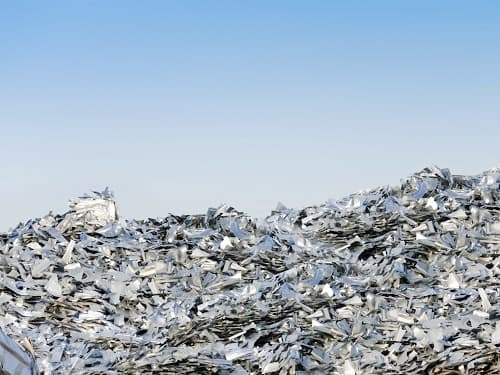
4. Aluminum scraps pretreatment process in developing countries and developed countries
4.1 Some developing countries’ pretreatment process as the following
4.1.1 For the single variety or aluminum and aluminum alloy scraps with no other impurities, generally no complicated pretreatment is needed, but the bulk aluminum scraps need to be broken (sheared or other methods) into blocks with specifications that meet the requirements, baled the loose aluminum scraps into the block, and classified according to the type and composition of the scraps;
4.1.2 For high-grade aluminum scraps (including cast aluminum alloys, deformed aluminum alloys, and pure aluminum, etc.), large-scale secondary aluminum companies generally remove the inclusions such as soil and directly put them into the melting furnace.
In small secondary aluminum companies, Generally, the cast aluminum alloy, deformed aluminum alloy, and pure aluminum are manually separated and then used separately;
4.1.3 For low-grade scraps, because of its complex composition (containing scrap steel, scrap copper, scrap lead and other metals and plastics, rubber, wood chips and other non-metallic inclusions), manual sorting is mainly used. First screen out the dirt and garbage, then pick out the non-metal and metal scraps. The sorted aluminum scrap is mixed, and generally no longer sorting.
The scrap material pretreatment technology is still very outdated, and simple manual sorting is still used. The tools used are magnets, hammers Etc. Based on experience, the labor intensity is high, the cost is high, and the sorting quality is poor.
4.2 Pretreatment process of aluminum scraps in developed countries
The technological research and application of aluminum scrap pretreatment in developed countries started earlier. It has realized the mechanization and automation of aluminum scrap pretreatment, which can remove metal and non-metal impurities maximumly, improve production efficiency and sorting quality, and reduce production costs.
The pretreatment process used includes sorting, disassembly, baling, drying, oil removing and surface organic coating film removal.
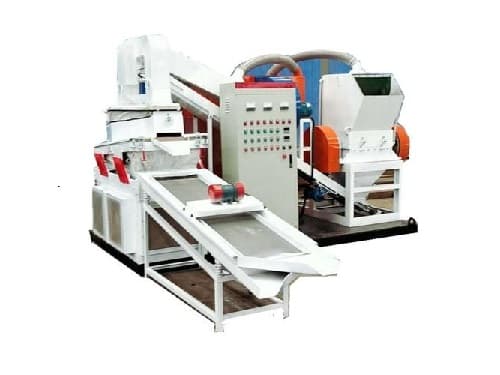
5. Sorting and separation
The purpose of aluminum scraps pretreatment technology is to realize the mechanization and automation of aluminum scraps sorting, to remove metal impurities and non-metal impurities to the maximum extent, and to effectively sort aluminum scraps.
The most ideal sorting method of aluminum scraps is to divide the aluminum scraps into several categories according to the main alloy composition, such as alloy aluminum, aluminum-magnesium alloy, aluminum-copper alloy, aluminum-zinc alloy, aluminum-silicon alloy, etc.
This can reduce the difficulty of removing impurities and adjusting the composition in the smelting process, and can comprehensively utilize the alloy components in the scrap aluminum, especially the scrap aluminum with high zinc, copper, and magnesium, which must be stored separately and can be used as a smelted aluminum alloy ingredient.
The sorting methods mainly include form sorting, mechanical sorting, heavy medium sorting, fire sorting and electrostatic sorting.
5.1 Form sorting
Form sorting refers to physical form sorting, that is, sorting according to appearance signs (color, section characteristics, hardness, mass density, magnetism, etc.) and physical signs (part names, alloy, etc.).
Visual methods can be used, but also with the help of spot analysis, spectral analysis and special instruments.
For example, iron, copper, and aluminum alloy can be distinguished according to different colors; white metals can be distinguished from aluminum, magnesium, zinc, lead, copper, tin, etc. according to the difference in surface color after cleaning; basic size can be distinguished according to different mass density.
The material of the same part, such as magnesium parts, is lighter than aluminum parts; the magnetic can be used to determine aluminum-clad or aluminized steel parts.
When the color, density, and magnetic properties cannot be identified, the spot analysis method, spectral analysis method, and special instruments can be used for sorting.
The spot analysis method is to drop a chemical reagent on the smooth surface of a metal or an alloy. The existence of a certain element can be judged according to the displayed color.
The different reagents can be sequentially dropped to determine the type of alloy. Such as CdSO. (5 g), NaCl (10 g) and hydrochloric acid (20 mL) in an aqueous solution (100 mL) dripped on the metal surface.
If it appears black after 10-20 s, it is a magnesium alloy; if it is gray, It is an aluminum-zinc alloy; for aluminum and aluminum alloy, it is transparent. At the same time, you can roughly estimate the content of an element based on the color depth.
The spot analysis method is simple and easy to use and convenient to apply. For some special parts, if the chemical composition needs to be accurately determined, a spectral analysis method must be used.
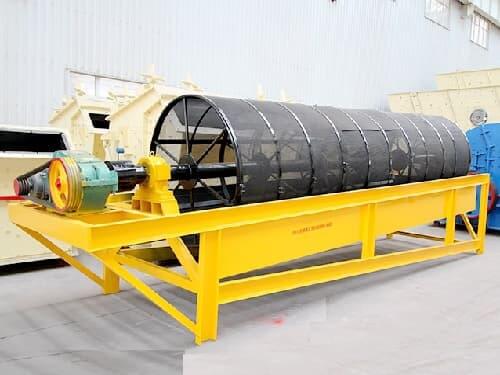
5.2 Mechanical sorting
Mechanical separation mainly includes particle size separation method, air blow separation method, magnetic separation method, flotation method and eddy current separation method.
5.2.1 Particle size sorting
When it is necessary to separate fine or large components from aluminum scraps, the particle size separation method can be used.
Screening machines are generally used in the sorting, including fixed screens, roller screens and vibrating screens.
There are two types of fixed screen: grid type and horizontal type, which are suitable for sorting aluminum scraps with particle size J bigger than 50 mm.
The sifting angle of the sieving machine shall not be less than 350 when screening bulk materials; the inclination angle shall not be less than 50 when sorting flat materials or wet pieces.
The screening efficiency of the grid-type screening machine does not exceed 65%. The required screening area F can be calculated as follows:
F = Q / 2.4a
In the formula Q-Sort capacity calculated based on the original scraps material / t · h-1
A-Gap width of screen net / mm
When selecting the size of the grid type screening machine, the following principles should be followed: the width of the screening machine should be greater than 2 times the maximum material block; the length of the screening machine is at least 2 times its width.
A rotary screen is a cylindrical rotating drum with perforations. There are several screens in the drum (the screen diameter is not the same), which are installed in series or in parallel.
If the aluminum scrap contains a lot of dust, usually multiple water nozzles are installed in the drum for wet screening.
A rotary screen is suitable for screening large and medium-sized materials (the particle size of the block is less than 250). The inclination angle of the rotary screen is 2-8 degrees and the speed is 10-15r /min.
A vibrating screen is widely used for particle size separation of aluminum scraps. According to the position of the screen, the vibrating screen can be divided into inertia screen, automatic balance screen and resonance screen.
The inertia screen has one or two boxes with replaceable screens, which are installed on spring hangers or metal frames.
The vibration of the screening machine is completed by the rotation of the rotating shaft.
The automatic balance screen is often used for dehydration of aluminum scraps and suspension Separation and weighting agent washing; Resonant sieve is suitable for screening aluminum scraps with a particle size of less than 300 mm.
It has strong separation ability, high reliability and low energy consumption.
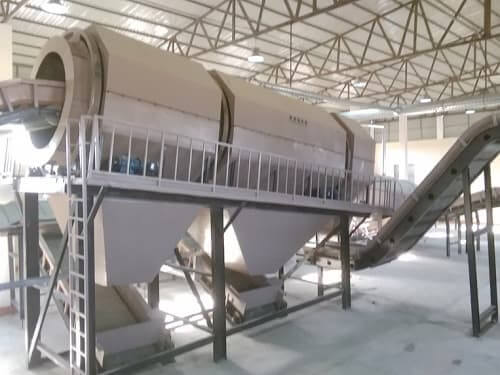
5.2.2 Air blast process
The Air blast process method uses the effect of airflow to separate aluminum and aluminum alloys from non-metallic inclusions such as paper scraps, plastic films, wood blocks, and dust with lower density.
The Airblast process is an ideal method for separating light non-metallic inclusions.
5.2.3 Magnetic process sorting
The magnetic process separation method can separate ferromagnetic inclusions and parts with a large amount of iron from aluminum scraps. It has been widely used abroad.
This method is suitable for aluminum scrap, slag, aluminum chips, broken cables, scraps and stamping scraps with a particle size below 450 mm.
Iron is a harmful impurity in aluminum and aluminum alloys, and it also has the greatest impact on its performance.
Therefore, it should be sorted out to the greatest extent in the pretreatment process.
Whether ferromagnetic inclusions can be completely sorted out depends on the particle size, layer thickness, accumulation amount and inclusion rate of the waste, as well as the strength of the magnetic field and the speed of the material in the magnetic field.
There are two types of magnetic separators: suspension type separator and electromagnetic wheels.
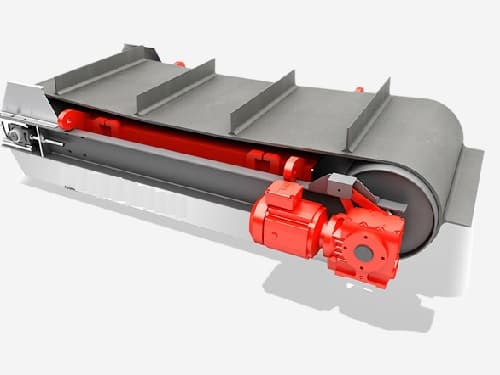
The suspension sorting machine is installed in the longitudinal or transverse direction of the conveying device, and the iron-containing materials are sucked onto the discharge belt by the iron remover, and then conveyed to the discharge end.
The suspension magnetic separator cannot sort ferromagnetic materials with a size less than 5 mm and a weight less than 80 g or more than 20 kg;
The electromagnetic wheel is suitable for sorting ferromagnetic materials in loose granular or bulk materials, and the optimal operation of its conveyor belt The speed is 1.25 ~ 2.00 m / s, which is consistent with the rotation speed of the electromagnetic wheel 50-60 r / min.
The particle size of the sorted materials and the thickness of the layer on the conveyor belt must not exceed 150um.
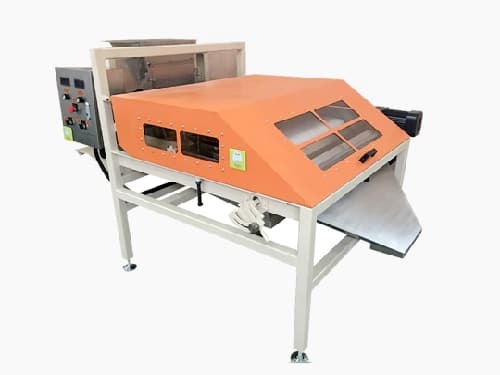
5.2.4 Flotation process sorting
The flotation process is also called water separation. This method uses water as the medium and uses the buoyancy of water to separate light materials such as plastic, wood, rubber and other materials contained in scrap materials from aluminum materials and take them away with water at a constant flow rate.
The water was also taken away into the sedimentation tank. This method can completely separate light materials with low density and is simple and easy to work.
5.2.5 Eddy current sorting
Different metals experience different electromagnetic forces when they move in an alternating electric field, so the horizontal projectile motion distances they produce are also different.
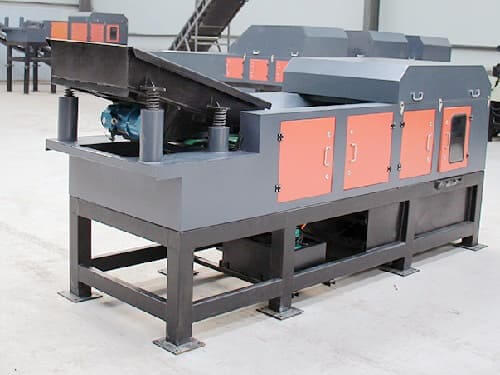
The eddy current method is based on this principle to separate aluminum from non-aluminum metal by the action of electromagnetic force.
The most commonly used equipment is an eddy current separator. Although this equipment has a large investment, it has high separation efficiency (general impurity removal rate is more than 99%) and low production costs.
5.3 Heavy medium sorting
Heavy medium sorting is the sorting of the heavy medium made with weighting agent, suspending agent and water.
For example, when the density of the heavy medium is 3 150 kg/rm, heavy metals and aluminum with fixed parts sink, and aluminum and aluminum alloy scraps float out; when the density of the heavy medium is 2 780 kg / In3, copper-zinc alloy sinks; When the density of the heavy medium is 2 690 kg / ITl3, the aluminum-copper alloy sinks; heavy medium density is 2 550 kg / In3, the aluminum-silicon alloy sinks, while the aluminum-magnesium alloy and aluminum-magnesium-silicon alloy float.
The heavy medium sorting method needs to be equipped with a special heavy medium preparation device, which has low separation efficiency (generally less than 90%) and high production cost, which has been rarely used at present.
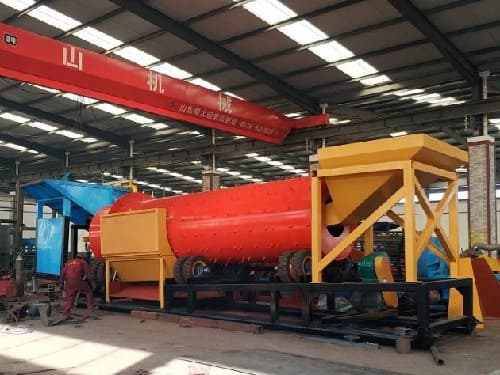
5.4 Fire sorting
The firing method uses aluminum and aluminum alloys to have different melting points from iron, tin, zinc, and lead, and separates them by controlling the melting temperature in stages during the melting process.
When the melting temperature is controlled at 200-250%, tin is first melted and flows out; at 300-350 ° C, lead is melted and flows out; at 400-450 ° C, zinc is melted and flows out; and then the melting temperature is increased to more than 580%. After the aluminum and aluminum alloy are melted, high-melting metals such as iron are removed.
Fire separation can also separate cast aluminum alloy from forged aluminum alloy and can body and can lid separation.
5.5 Electrostatic sorting
Electrostatic separation is the use of an electric field to separate metal conductors from insulating objects.
Objects in an electric field, regardless of their composition, carry a charge. The size of the charge depends on the polarity of the stun motor and the characteristics of the material.
With the same electric field, the charge obtained by a metal conductor is greater than that of an insulated object.
When a charged object comes into contact with a grounded conductor, it emits its own charge.
The amount of discharged electricity depends on the resistance, capacitance, and contact time.
For metal conductors, due to their low electrical resistance, the charges they carry will be quickly released without being absorbed when they come into contact with the ground conductor.
Insulating objects retain their own charges for a longer period of time and are therefore more likely to be absorbed. This is the basic principle of electrostatic separation.
The metal object on the surface of the electrostatic separator’s drum immediately releases its charge and falls into the drum, while the insulator stays on the drum surface as the drum rotates, and then falls into another drum.
Electrostatic sorting is mostly used for the pretreatment of scrap wires and cables.

6. Disassembly
The disassembly is to change the embedded Cu, Fe, Mg, Zn and other metals in the bulk aluminum scrap into free bodies to facilitate separation, and reduce the bulk and weight of the scrap for subsequent processing.
Disassembly can be divided into two types: disassembly and destruction. Disassembly can recover valuable parts and products (such as rolling bearings, fasteners, etc.) from the scrap.
Generally, use fitter tools, electric nut wrenches, etc in the disassembling.
The destruction of aluminum and aluminum alloy scraps is mostly destructive disintegration, which is divided into shear destruction and crushing destruction.
Shear destruction is suitable for the disintegration of deformed aluminum and aluminum alloy scraps.
Small scraps are usually sheared with jaw-type shears, while aluminum scraps with large cross-sections are mostly used for hydraulic shears.
Crushing destruction is suitable for the disintegration of aluminum alloy castings.
According to the size of the crushed product, the crusher is divided into three types: primary crusher (250 ~ 300 mm), intermediate crusher (25 ~ 30 mill) and fine crusher (less than 3 mm).
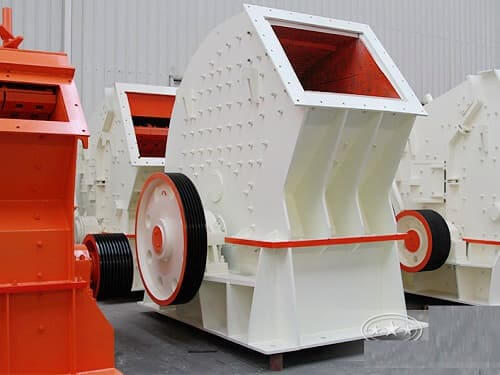
General crushers include drop hammer crushers, jaw crushers, roller crushers and hammer crushers.
The drop hammer crusher is suitable for crushing large aluminum alloy castings, slags, etc. The weight of the drop hammer ranges from 500 to 1000 kgs to 6-15T. The maximum size of the crushed block is 1500 to 2000 mm. The maximum size of the block is 500-300mm.
The jaw crusher is suitable for primary crushing of slag, the reduction rate is 3-5, and the operation reliability is strong and easy to use.
The roller crusher is suitable for processing slag with a particle size of less than 3 mm, etc. The material can further recover aluminum from aluminum dross.
The Hammer crusher is crushed by a hammer hinged on a rotating rotor. The crushing impact force depends on the size of the hammer and the rotation speed of the rotor.
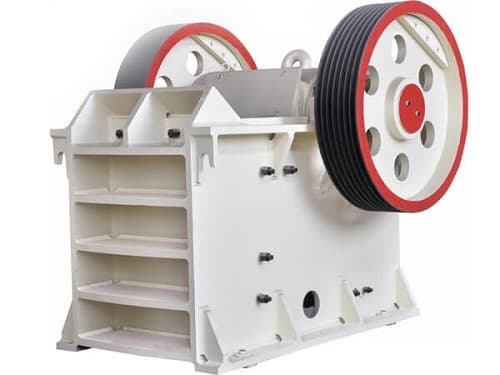
7. Pretreatment technology for surface coating of scrap aluminum
Many scrap aluminum surfaces are coated with protective layers such as paint, especially scrap aluminum packaging containers.
The largest numbers are cans and other packaging containers and toothpaste skins.
In small smelters, this type of scrap aluminum is generally smelted without any pretreatment.
The paint is burned during the smelting process, which not only has a low metal recovery rate but also seriously pollutes the environment.
Such materials are thin-walled, and the paint will oxidize part of the aluminum during the melting process, and increase the impurities and bubbles in the aluminum.
The more advanced secondary aluminum process generally requires a pretreatment to remove the coating before smelting.
The main technologies are dry and wet. The wet method is to soak the waste aluminum with a heavy solvent to cause the paint layer to fall off or be dissolved by the solvent.
The disadvantage of this method is that the amount of waste liquid is large and it is difficult to handle, so it is generally not suitable for use.
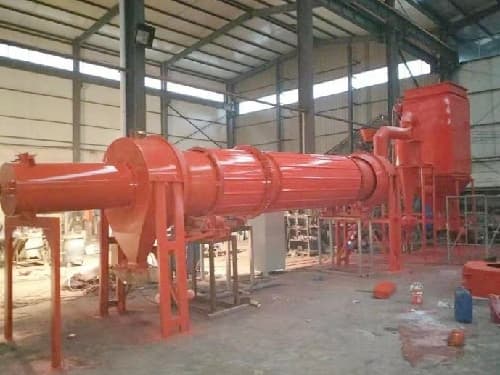
The dry method is the fire method, and the rotary kiln roasting method is generally used.
The main equipment of the roasting method is a rotary kiln. Its biggest advantage is its high thermal efficiency, which facilitates the separation of scrap aluminum and carbide.
The heat source for roasting comes from the hot air of the heating furnace and the heat generated during the carbonization of the waste aluminum paint layer.
During production, the rotary kiln rotates at a certain speed, and the paint layer on the surface of the scrap aluminum is gradually carbonized at a certain temperature.
Due to the rotation of the rotary kiln, the materials collide and vibrate with each other, and finally, the carbonized products fall off from the waste aluminum. Part of the fallen char is collected at one end of the rotary kiln, and part of it is recovered in the dust collector.
The pretreatment of scrap aluminum is an important part of the recycling process of scrap aluminum.
With the improvement of recycled aluminum technology, pretreatment technology will become more and more important.
Judging from the current development, the most ideal pretreatment technology for scrap aluminum is to completely separate non-aluminum materials from scrap aluminum and its alloys and to efficiently classify scrap aluminum according to alloy grades to achieve comprehensive scrap aluminum for the purpose of utilization, this is the development direction of secondary aluminum technology research.

